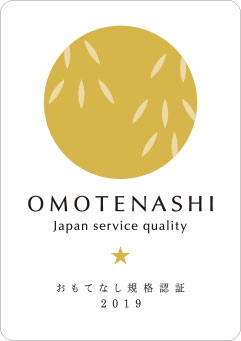Campus Create Co, Ltd will hold the Second Science Salon on August 23, 2022, titled “New Advanced Process & Integration Technology”, to introduce the latest research in MEMS, FCVA, Semiconductor crystal growth, materials informatics, Atmospheric low temperature plasma and so on related technology.
We are waiting for your participation.
【Date・Time】
August 23, 2022(Tues.) 9:45~17:45(Japan Time)
Online seminar via ZOOM
Free to register
↓↓
https://us02web.zoom.us/webinar/register/WN_jY3rlubCTnukUxpAWsyCJg
【Program】
Morning Session
9:45~10:00 Opening Remarks from Organizer Campus Create Co., Ltd
10:00~11:00 Sputtering Crystal Growth of Nitride Semiconductors and its Device Application
Prof. Hiroshi FujiokaTokyo University, Japan
11:00~11:05 Break
11:05~12:05 Atmospheric low temperature plasma and its application on Material, Sterilization/virus inactivation, Environmental fields
Assoc. Prof. Akitoshi Okino, Tokyo Institute of Technology Japan
Afternoon Session
14:30~14:35 Greeting from Organizer Campus Create Co., Ltd
14:35~15:35 Case Study on Industrial Applications of MEMS Technologies
Prof. Hiroshi Toshiyoshi, Tokyo University, Japan
15:35~16:35 Estimation of electrical properties of semiconductor devices using deep learning
Prof. Hiroshi Ikenoue, Kyushu University, Japan
16:35~16:40 Break
16:40~17:40 The Evolution of Filtered Cathodic Vacuum Arc beyond Coating Materials
Prof. Tay Beng Kang, Nanyang Technological University, Singapore
17:40~17:45 Closing Remark Campus Create Co., Ltd
【Speech Introduction 】
- No.1 Speech
Speech Title: Sputtering Crystal Growth of Nitride Semiconductors and its Device Application
Speaker: Prof. Hiroshi FujiokaTokyo University, Japan
Abstract:
Gallium nitride devices, which are widely used in LEDs and power transistors, are generally prepared using the MOCVD. However, this method is expensive and requires high temperatures of 1000°C or higher. We have found that high-quality nitride semiconductors can be grown using the inexpensive sputtering method, which is widely used in industry. In this talk, I will discuss the basics of low-temperature sputter growth of nitride semiconductor crystals and its device applications.
- No.2 Speech
Speech Title: Atmospheric low temperature plasma and its application on Material, Sterilization/virus inactivation, Environmental fields
Speaker: Assoc. Prof. Akitoshi Okino, Tokyo Institute of Technology Japan
Abstract:
Since the beginning of this century, atmospheric low temperature plasmas have become available, and research on their application to various fields, mainly surface treatment and medicine, has been actively conducted all over the world. In our laboratory, brand-new original plasma sources such as temperature-controllable plasma from below 0 ºC to high temperature and multi-gas plasma that can use a variety of gases have been developed. And research is being conducted with many companies/laboratories/ universities on the best plasma treatment for each application.
- No.3 Speech
Speech Title: Case Study on Industrial Applications of MEMS Technologies
Speaker: Prof. Hiroshi Toshiyoshi, Tokyo University, Japan
Abstract:
MEMS (Microelectromechanical Systems) is a technology to produce miniaturized machines using semiconductor fabrication processes. Since 1996, the lecturer has been engaged in industrial collaboration and developed MEMS devices for fiber-optic communications, automobile, medical diagnosis applications, and recently for vibrational energy harvesters. They are all developed through the framework of collaboration research agreements of national universities of Japan. In addition to technical contents of MEMS, we discuss on a way to establish long-lasting academic-industrial partnership.
- No.4 Speech
Speech Title: Estimation of electrical properties of semiconductor devices using deep learning
Speaker: Prof. Hiroshi Ikenoue, Kyushu University, Japan
Abstract:
In recent years, the development of smart manufacturing equipment using AI has been active. In the manufacturing of semiconductor devices, AI analysis is introduced for complex processes that are difficult to control, and its introduction is expected to accelerate in the future as semiconductor device structures become more complex. In this presentation, we focus on poly-Si TFTs, which are used as driving circuits for high-definition displays, and we report the estimation results of the electrical characteristics of poly-Si TFTs using deep learning.
- No.5 Speech
Speech Title: The Evolution of Filtered Cathodic Vacuum Arc beyond Coating Materials
Speaker: Prof. Tay Beng Kang, Nanyang Technological University, Singapore
Abstract:
In the 1970s, the filtered cathodic vacuum arc (FCVA) was born. The FCVA technology enables vacuum coating deposition to be performed at room temperature, which allows vacuum coating to be performed on a wider variety of substrate materials such as plastics, rubber and ceramics. The ability to control the highly ionized plasma by altering the energy of the deposition ions and the filtering of ionized particles has open up to a new era of nanomaterials. This talk aims to give an insight on the evolution, development and applications of an industrial proven FCVA. The technological evolution from a single 90° filtering bend to an off-plane double bend (OPDB) filtering, from a single composite target source to a dual target source Y-bend FCVA, from batch loading to continuous in-line FCVA deposition, will be presented.
Moreover, FCVA is also able to deposit other forms of thin films such as nano-crystalline graphitic (NCG) for electronics and thermal applications, metal oxide film for UV photoluminescence, waveguides and distributed bragg reflectors (DBR) and nanocomposite films for change in film hydrophobicity and electrical resistivity.


